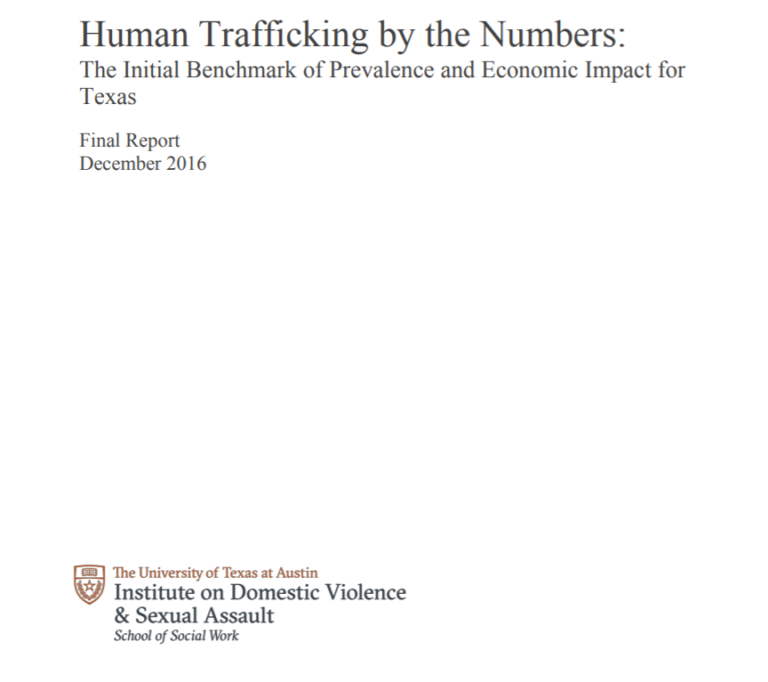Executive Summary
Prevalence Highlights
Currently, there are approximately 79,000 minor and youth victims of sex trafficking in Texas.
Currently, there are approximately 234,000 workers who are victims of labour trafficking in Texas.
Currently, there are an estimated 313,000 victims of human trafficking in Texas.
Cost Highlights
Minor and youth sex trafficking costs the state of Texas approximately $6.6 billion. Traffickers exploit approximately $600 million from victims of labour trafficking in Texas.
Background
Though human trafficking is widespread in geographically large states with large urban centers like Texas, the true scope of this hidden crime is largely unconfirmed as data on human trafficking are difficult to ascertain. Existing data gathered in anti-trafficking efforts focus almost exclusively on identified victims, shedding light on only a fraction of the problem. The first phase of the Statewide Human Trafficking Mapping Project of Texas focused on providing empirically grounded data as a benchmark about the extent of human trafficking across the state.
The following three primary research questions guided our data collection efforts, which
included queries of existing databases, interviews, focus groups, and web-based surveys.
1. What is the prevalence of human trafficking in Texas?
2. What is the economic impact of human trafficking in Texas?
3. What is our understanding of human trafficking in Texas?
Methods
The findings in this report were derived using a multi-methods approach to quantify the prevalence and economic impact of human trafficking in Texas. Higher-than-average risk industry and community segments were chosen for sex and labour markets. We defined community segments as groups of people considered to be at higher-than-average risk of trafficking because of risk indicators found in trafficking cases (e.g. homelessness). More specifically, rather than attempting to establish prevalence of trafficking among the 27.4 million people living in Texas, for the purposes of demonstrating our methodology, establishing some benchmarks on human trafficking prevalence and economic impact estimates, and providing a concrete example of our planned activities moving forward, victimization rates were applied to a select few community segments that are at higher than-average risk of trafficking. The methodology has addressed the critical industry and community segments to accurately estimate prevalence while reducing overlap between the chosen segments.

Source: Busch-Armendariz, N.B., Nale, N.L., Kammer-Kerwick, M., Kellison,B., Torres, M.I.M., Cook-Heffron, L., Nehme, J. (2016). Human Trafficking by the Numbers: Initial Benchmarks of Prevalence & Economic Impact in Texas. Austin, TX: Institute on Domestic Violence & Sexual Assault, The University of Texas at Austin.


